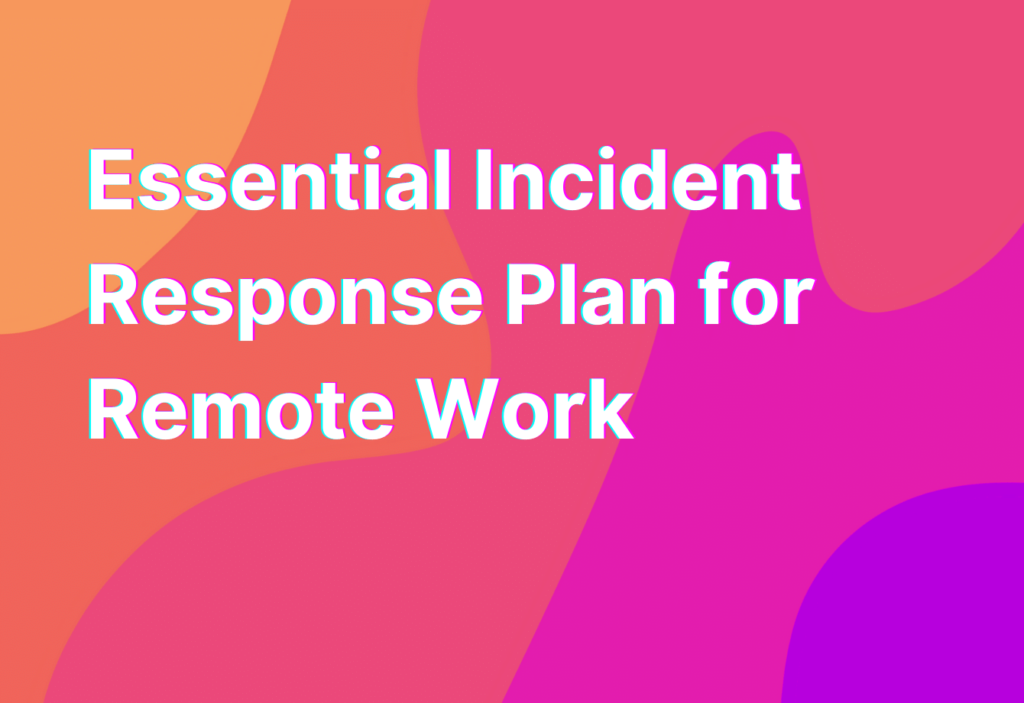Essential Incident Response Plan for Remote Work
Hey there, remote work warriors! Ashley here, your go-to gal for all things remote work. Today, I want to talk about something that might not be the most exciting topic, but it’s oh-so-important: incident response plans. Now, I know what you’re thinking, “Ashley, why do I need an incident response plan for remote work?” Well, my friend, let me tell you.
What is an Incident Response Plan?
Before we dive into the nitty-gritty details, let’s start with the basics. An incident response plan is a documented set of procedures that outlines how your team should respond to and recover from any security incidents or data breaches. It’s like having a superhero cape for your remote work setup!
Now, you might be wondering, “But Ashley, I work from home. What kind of security incidents could possibly happen?” Ah, my friend, you’d be surprised. Even in the comfort of your own home, there are still risks to consider. From phishing attacks to malware infections, it’s better to be safe than sorry.
Why Do You Need an Incident Response Plan for Remote Work?
Great question! Having an incident response plan in place is like having a safety net for your remote work setup. It helps you minimize the impact of security incidents, protect your sensitive data, and ensure business continuity. Plus, it shows your clients and stakeholders that you take security seriously.
Imagine this: you’re working on a top-secret project for a client, and suddenly, your computer gets infected with malware. Without an incident response plan, you might panic, lose valuable data, and potentially compromise your client’s trust. But with a well-thought-out plan, you can quickly isolate the infected device, notify the necessary parties, and get back on track in no time.
Creating Your Incident Response Plan
Now that you understand the importance of an incident response plan, let’s talk about how to create one. Here are the essential steps:
- Identify potential risks: Start by identifying the potential security risks that could affect your remote work setup. This could include things like phishing attacks, malware infections, or even physical theft of your devices.
- Assess the impact: Once you’ve identified the risks, assess the potential impact they could have on your business. This will help you prioritize your response efforts and allocate resources accordingly.
- Define roles and responsibilities: Clearly define who will be responsible for each step of the incident response process. This ensures that everyone knows their role and can act quickly and efficiently when an incident occurs.
- Create a communication plan: Communication is key during a security incident. Make sure you have a plan in place for notifying the necessary parties, such as clients, stakeholders, and your internal team.
- Test and update regularly: Once your incident response plan is in place, don’t just set it and forget it. Regularly test and update your plan to ensure it remains effective and relevant.
Remember, an incident response plan is not a one-size-fits-all solution. It should be tailored to your specific remote work setup and the potential risks you face. So, take the time to assess your unique situation and create a plan that works for you.
Wrapping Up
Well, my fellow remote work enthusiasts, we’ve reached the end of our journey through the world of incident response plans. I hope you’ve learned a thing or two and feel inspired to create your own plan. Remember, it’s better to be prepared and never have an incident than to be caught off guard.
And speaking of being prepared, if you want to learn more about key management for remote work, be sure to check out this link. It’s a treasure trove of information that will help you keep your sensitive data safe and sound.
Until next time, stay safe, stay secure, and keep rocking that remote work life!


